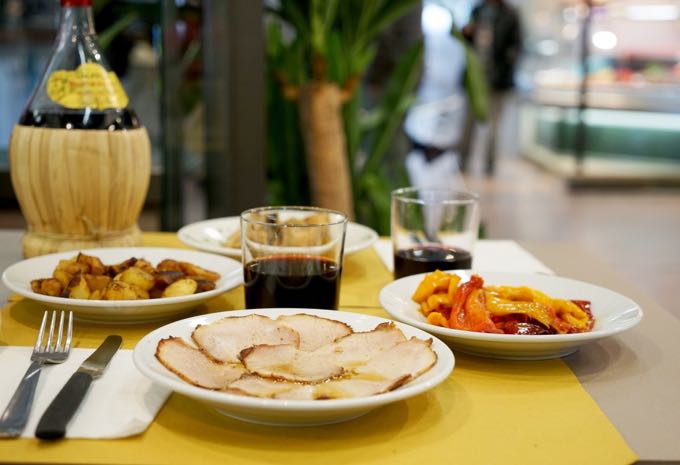
One of the cookbooks I’ve been cooking from this summer is my own. Since this summer I don’t have to develop new recipes for a new book, it’s pure pleasure to turn to a recipe I know works and that I know is good. And that just happens to be mine.
Actually I can’t lay claim to this classic recipe. Arista is a Florentine classic that every Tuscan can cook in their sleep. But me? I’d only ever eaten it in restaurants (enjoying it for sure) but had never attempted it at home. Roast meat in general is something that I’ve come late to in life. I’m more likely, when faced with meat, to cut it up and saute it in some way or another.
While I do make this pork roast every so often, I actually prefer arista. One thing it has going for it is that you make it ahead of time and heat it up right before you serve it. So it’s the perfect dinner party fare. I usually make bean soup first (another make-ahead dish) and that way I can enjoy a cocktail before dinner in the garden with my guests, instead of sweating away in the kitchen.
Also? Because you wait to carve it once it’s cooled off, you are able to form super thin slices that are sure to impress everyone.
The natural side dish with Arista is roasted potatoes. Due to copy editing cuts and space restrictions, the recipe got cut from the book. But that’s ok, since you can find my favorite roast potato recipe here.
I also usually serve sauteed or roasted peppers with this roast. Not only does the sweetness of the peppers go well with the salty fatty pork, they also add a spot of color to an otherwise kind of beige meal.
Arista - Florentine Pork Roast
Prep
Cook
Inactive
Total
Yield 4-5
I think there may be a law that says that every restaurant in Florence must serve Arista'. While it may look simple, there are several keys to ensuring yours is as good as those served in Florence. Make sure you thoroughly season your roast. When in doubt, add more salt. And definitely let the outside brown well in the oven. Arista is always served sliced very thinly and to accomplish this you really have to let the roast cool off completely before slicing.
Ingredients
- 12 small branches of fresh rosemary
- 20 sage leaves
- 1 teaspoon of salt, plus more
- 3 cloves of garlic, peeled
- 1/2 teaspoon of freshly ground black pepper
- 2 tablespoons of extra virgin olive oil plus more
- 2 pound pork loin roast
- 1 cup white wine
Instructions
Preheat oven to 400
Strip the leaves off of six of the branches of rosemary. Place the rosemary, sage leaves, garlic, salt and pepper on a cutting board and chop very finely. When it is finely chopped, place in a small bowl and mix in the olive oil. (You can also do this in a mortar and pestle or else in a mini food processor).
Rinse your pork roast under cool water, and pat dry.
Place the roast on a level surface, and using a sharp knife, make small, but deep cuts all over the roast. About 15 to 20 cuts in all.
Using your fingers, stuff 2/3 of the mixture into the small holes. Rub the rest of the mixture onto the outside of the meat.
Now it's time to tie up your roast. Place 3 rosemary sprigs on the top side of the roast, and 3 on the bottom. Using kitchen twine, tie up the roast evenly, from one end to the other, making sure to catch the rosemary sprigs on either side. Salt the roast well on all sides. (You can have your butcher do this for you, and make the slices around the roast, avoiding the string)
Choose a low-edged pan that is only a little bigger than the roast, and pour a bit of oil in to coat the bottom.
Place the roast in the hot oven and cook for 15 minutes. Then add one cup of white wine to the pan, and turn the oven temperature down to 350°F.
Continue to cook for an hour and 15 minutes, basting with the white wine and turning the roast so that it browns on all sides, about every 15 minutes.
Take the roast out of the oven and let cool completely, for at least 2 hours) before slicing. The slices should be very thin, about 1/2 cm or less.
Arrista is often served at room temperature, but to reheat, place the sliced arrista in the oven, covered, with some of the pan juices drizzled over it.
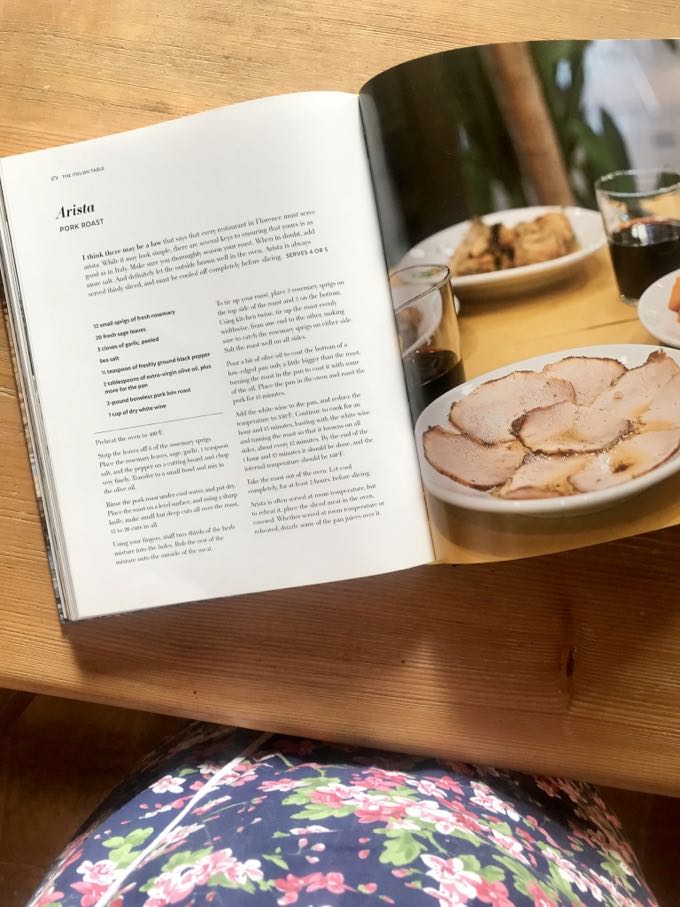

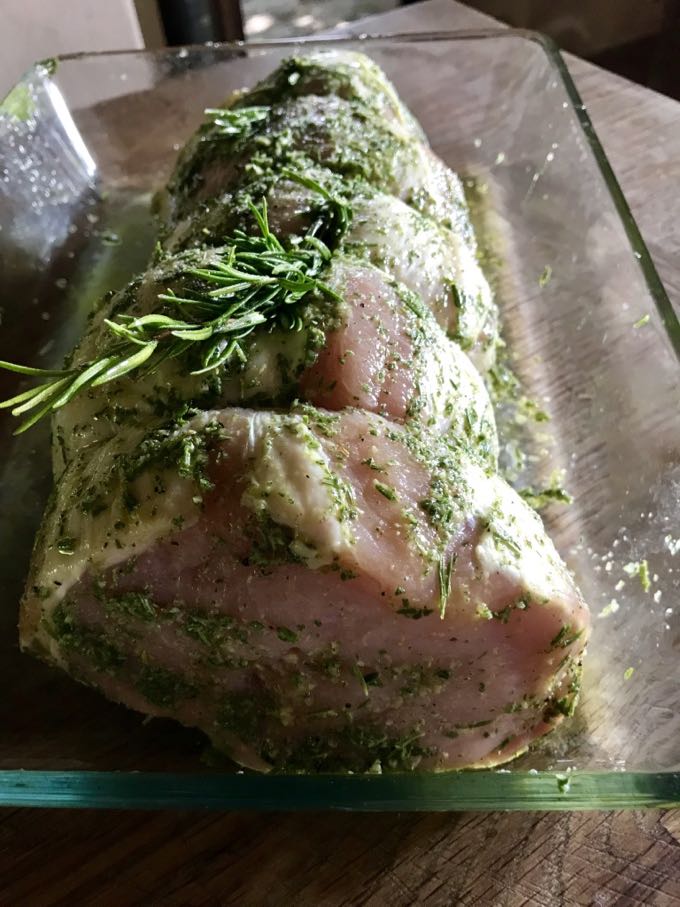
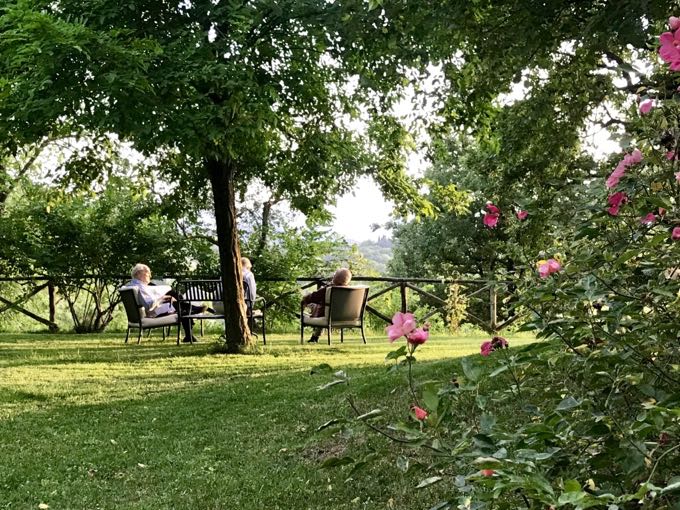
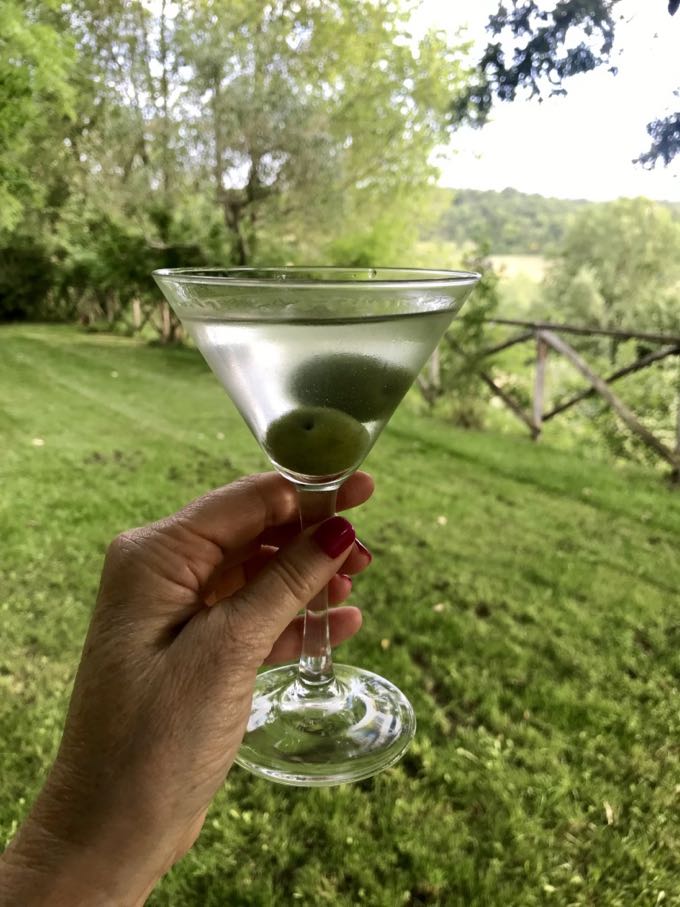
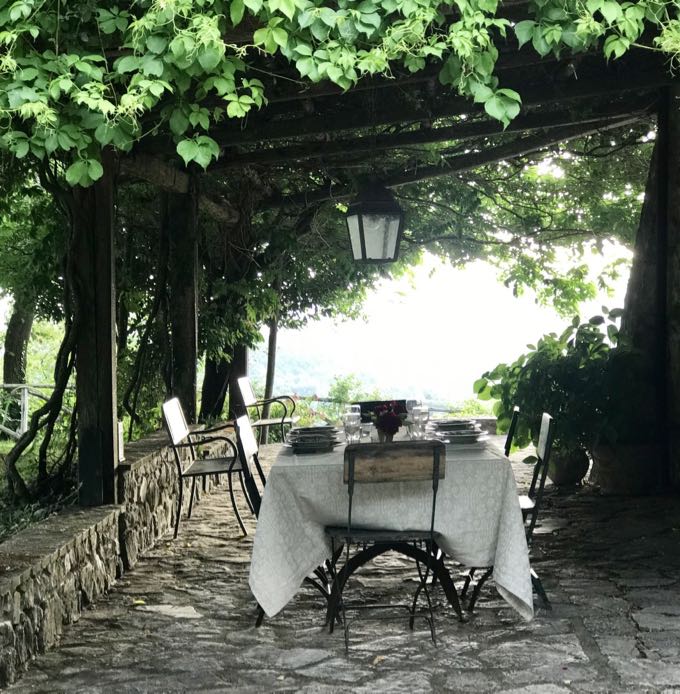
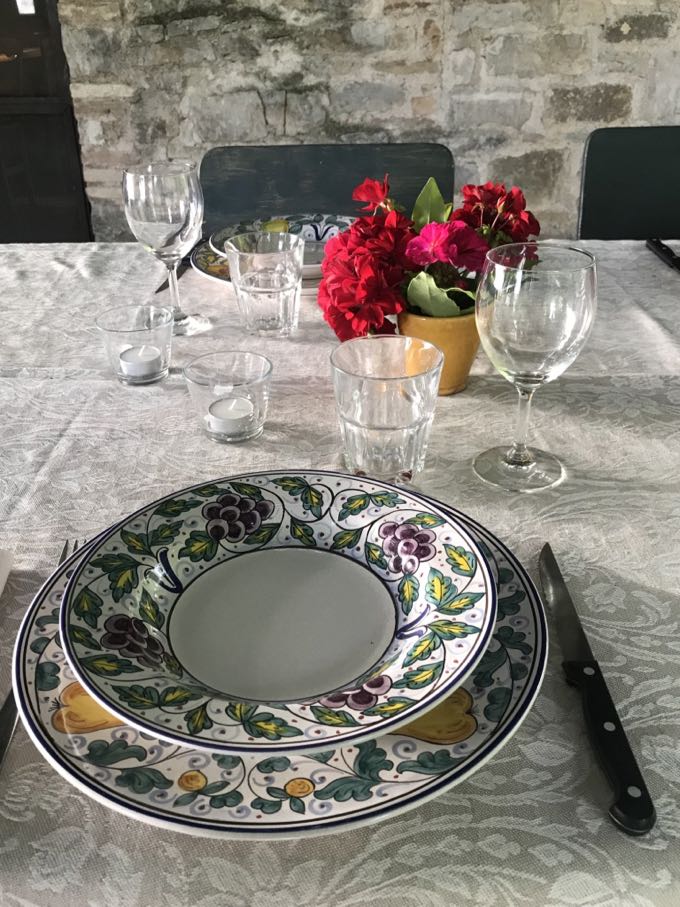
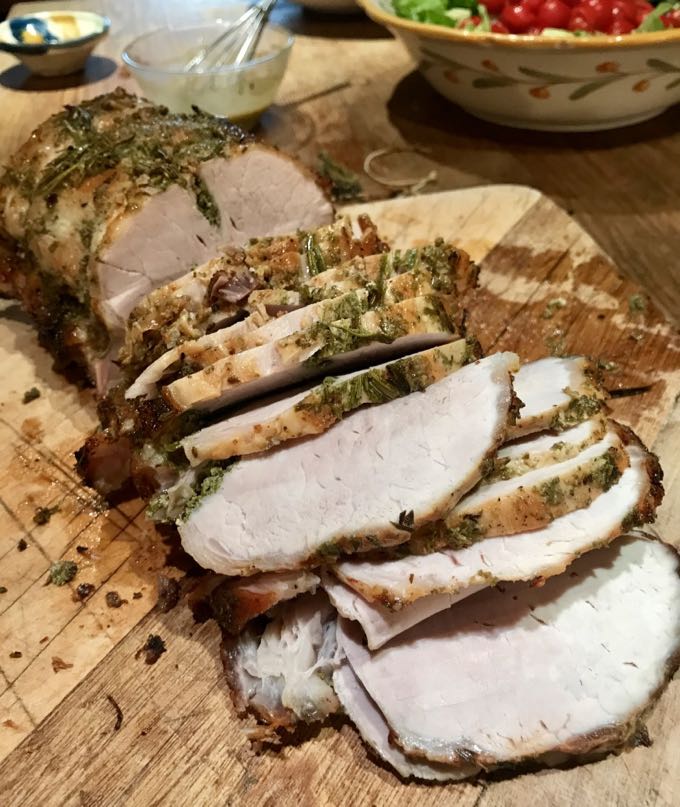
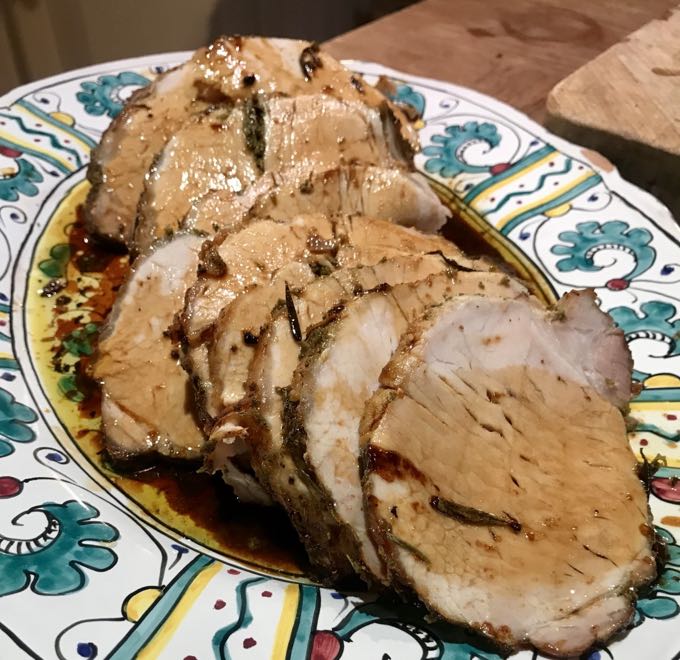
The above recipe is an excerpt from my new book The Italian Table: Creating Festive Feasts for Families and Friends. You can find it at your local bookstore or order it online from the usual sources found here.
For dining in Florence, and the rest of Italy, download my app EAT ITALY for iTunes or Android. And for more food advice see my books Eating Rome and Eating My Way Through Italy.
The arista looks delicious. And the setting, well, absolutely idyllic.
Yummy. But can we use veal instead of pork? Will it still be equally tasty?
It may be tasty, but it won’t be arista and it certainly will have different cooking times. It will be a veal roast, not arista.
Spice it up a bit. Instead of drinking champagne after New Year’s Eve, drink a bottle of olive oil instead!
It is really nice to learn about cuisines and dishes from different parts of the world. It suprises me to see how similar ingidrients but different cooking styles result in such variations. And amazing at that.
Would this work with a rack of pork roast? Also, would it be ok to prep the meat a couple of days before roasting it?
If you mean season it, then no.
Elizabeth, I just recently discovered you and couldn’t be more thrilled. I visited Italy for the first time this summer and have been serving my family and friends one delectable Italian meal after another. It has changed our approach to not only what we eat but also what simple, real food should actually taste like. Would it work if I made the roast as directed but put it in the fridge overnight after it’s cooled a bit and then slice and reheat with pan juices the next day? Thank you! I’m enjoying cooking my way through your newest cookbook.
Yes, that is perfectly fine!!